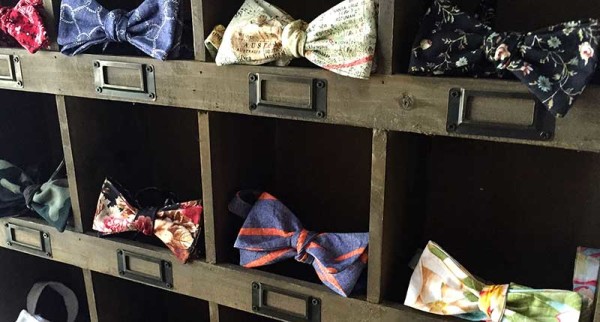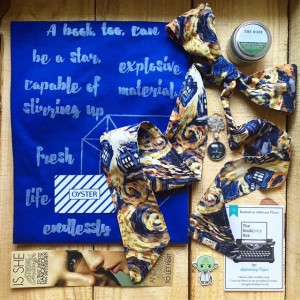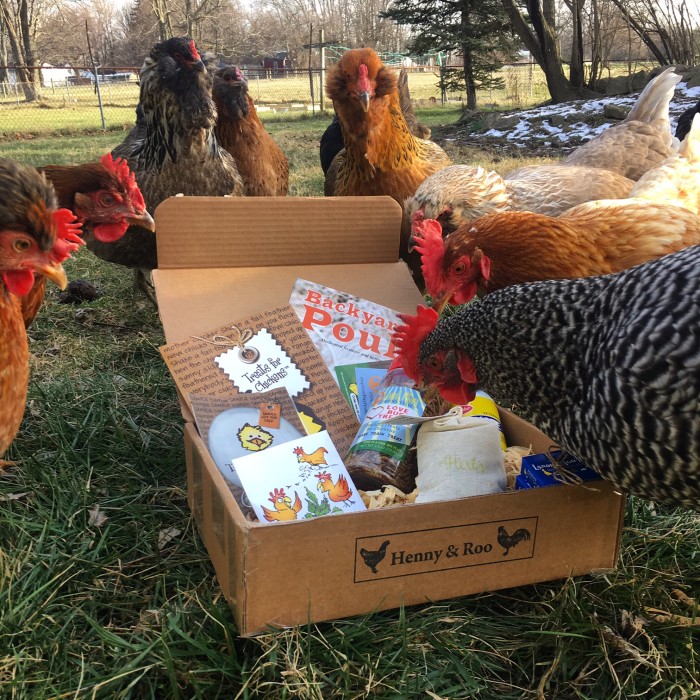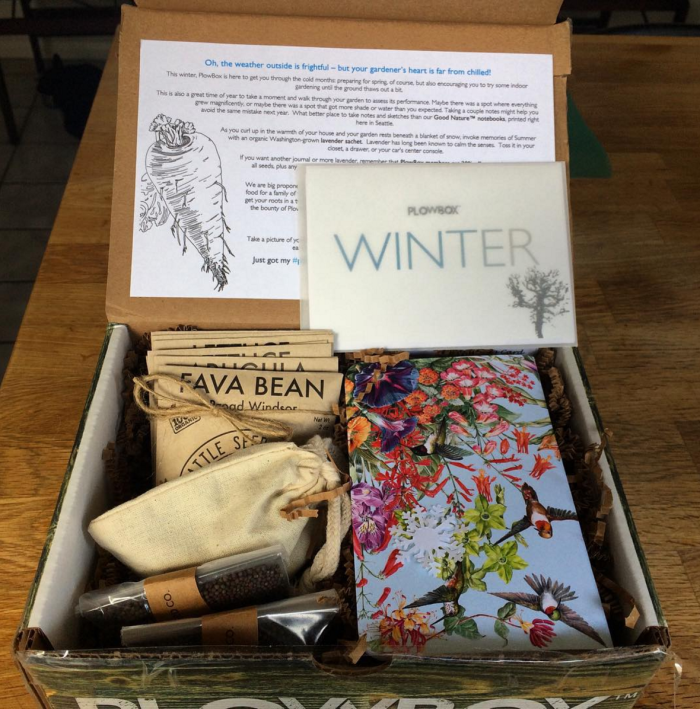Cratejoy is the primary software platform for subscription commerce the world over. One of the most exciting aspects of being an industry leader in an emerging industry, especially one that gives such freedom and power to small businesses, is being able to use the data, experiences, and insights we’ve collected over the last two years.
The Cratejoy Case Study series is one example we’re proud of rolling out. The second way we’d like to put our sellers’ experience to work for you is through a series of roundtable discussions on what we’ve identified as the primary questions, pain points, and areas for improvement for modern, online businesses.
Whether you’re an aspiring small business owner or a veteran salesperson, the one thing nobody ever gets tired of thinking and talking about is product/market fit. Self-explanatory, but deceptively subtle. On the one hand, supply and demand are a matter of common sense. On the other hand, getting a service or product into the orbit of the people that truly need it requires a complex skill set that means synthesizing your creativity, ingenuity, empathy, eye for quality, and ability to note trends and project future markets… all while avoiding confirmation bias, your own sense that your tastes are (or should be) universal, and your blind spots (after all, you don’t know what you don’t know).
Product/market fit: we know it when we see it from the safety of the peanut gallery — but when we find it for ourselves, it’s like catching lightning in a bottle. So we asked some Cratejoy sellers with great product offerings for a little more insight into what makes for the perfect match.

Niche & Product/Market Fit
Unsurprisingly, the first and most common response was as expected: landing between the goalposts of variety and specificity. If you have too narrow a focus, you’ll end up repeating yourself; too broad a niche, and you’re no longer serving anyone in particular.
“The main thing is to find a product that has two factors: variety and repeatability. If your business isn’t something consumable like food, the products you offer need to be something you can riff on month after month without repeating yourself…
“…Box subscriptions paint themselves into a corner where their product can’t sustain long-term customers, because they have no choice but to offer repeats too often. Secondly, it needs to be something that you can repeatably make, and make at scale. If you can’t get enough to support the demand of your customers, or it’s something that takes forever to make… then it’s probably not a good idea to go down that road!”
Jeremy at Bowtie of the Month Club

Researching the Market & Finding Your Passion
It’s clear that long-term planning is key. And while nothing about that phrase screams “fun,” we could also say that the first step in determining product/market fit is going shopping. The beauty of subscription boxes as a model is that your subscribers trust you to curate gifts on their behalf, and that means nailing your margins is only half the equation. Enjoying the process – finding products that make you happy and excited – is the best way to ensure your subscribers feel understood, cared for, and known.
“I’d say the first step would be to explore the market. Not to say that you couldn’t still survive as a business if there are already other boxes like yours – but by knowing what’s out there, you have a better idea what niche your box could live in.”
Kate at Terra Bella Box, which offers all-natural, cruelty-free bath and beauty products
“I began by looking at similar subscription boxes to make sure I was doing something different than what was already out there. The competition is high in this business, but if you have something with an authentic and artisan feel, then you have a good chance of getting noticed.”
Lalania at WEvolve Box, a beautifully curated experience of inner peace and spiritual learning
One of the great things about starting a subscription business is the low barrier to entry. A laser-focused appeal means attachment and passion from those subscribers who feel personally served by that specificity. Every purchase we make says something about who we are, and subscription boxes are a monthly (and month-long) way of declaring ourselves – joining a certain tribe.
That arises from a shared passion, and success seems to nearly always include it… But it’s not the only way to find ideas. Many of the best subscriptions follow a different path to inspiration: Noticing an overlooked population, or seeing a need that can be conveniently and beautifully met, or a person or problem for whom you’ve imagined the perfect solution.
“My best friend in starting up was market research. You have to be clear that your subscription will solve a problem or create an experience for people.”
Lydia of Handmade Cartel, which offers affordable and effective, chemical-free beauty and skin care products
We’ve talked before about the importance of niche: Big successes come from scratching just the right itch, not necessarily from meeting every need simultaneously. In fact, some subscriptions can get in their own way early on, by trying to offer too many versions, variants or options before they’ve really built up an audience. Like a lot of subscription commerce forces, it’s a little counterintuitive, but worth thinking all the way through:
 Fandom of the Month, Flitwicks, Halfblood Prints and The Book(ish) Box, among many others, have shown that there is a huge market for feminine-directed geek boxes. Thanks to some early successes, “geek boxes” are continually the highest performing market (along with, oddly, beef jerky suppliers) and by finding an often hidden, or overlooked, segment of that audience, these great subscriptions and many more have found wild success. There are infinite such groups out there, just as powerful and just as hungry, waiting for you to show them some love. And a subscription box, like a pen pal letter, is the perfect way to do it.
Fandom of the Month, Flitwicks, Halfblood Prints and The Book(ish) Box, among many others, have shown that there is a huge market for feminine-directed geek boxes. Thanks to some early successes, “geek boxes” are continually the highest performing market (along with, oddly, beef jerky suppliers) and by finding an often hidden, or overlooked, segment of that audience, these great subscriptions and many more have found wild success. There are infinite such groups out there, just as powerful and just as hungry, waiting for you to show them some love. And a subscription box, like a pen pal letter, is the perfect way to do it.
”The most important determination before launching a subscription service is whether or not there is a desire in the marketplace for what you plan to offer. Luckily, there are now subscription boxes covering a wide variety of interests, so it is easy to get a sense for how crowded and competitive a particular vertical may be.”
Louis at Supply Pod, a box curated by the staff of Outer Places, a site all about science fiction and science fact

This Is Personal: Adjusting the Margins
Of course, it’s a two-way street. Without subscribers, your service is not exactly going to scale. So while it’s true that your first step should be refining your basic idea and applying all the passion you can muster, that’s not the end of the story. Simply offering your great idea to the universe is not going to get it sold, and simply having a great idea doesn’t mean you have an audience. Sometimes it takes trial and error, and sometimes we may never know why an idea didn’t catch. The important thing is to be honest with yourself, throughout the process, so you can take those lessons on board moving forward.
“The first step is to ensure that a subscription box would be of value to your customer base. Testing the market and getting feedback on what your audience wants is critical. If it fits within your business model and enhances your service, then it’s as simple as doing the research and setting it up. Making sure the cost and amount of work it takes to make a quality product fits into your existing business is important too.”
Wayne at Dungeon Crate, a premium box-of-the-month for tabletop and roleplaying gamers
This last was another crucial note that many sellers implied, without directly stating: If you think of your subscription business as a replacement or a distraction from your daily life, that’s how it will behave. By implementing your new business as part of a larger strategy, you get the stability of recurring revenue and the thrill of a creative task every month — but only if what your subscribers get at the end of your monthly process has a perceived value higher than what they’ve paid. Whether through the unboxing experience, the strength of the curation, or the quality of your products, something in that box has to spark the passion and excitement your subscribers expect to feel.
“The most important thing to remember is that it isn’t some faceless customer buying a product at some store; this is personal. Do you have a product or products someone actually wants to receive every month, or are you just trying to jump on a train before it completely blows past you? You have to truly look at what you have to offer, without bias, and figure out if this is something people want to receive on a regular basis.”
Nick at Game Day Box, a monthly collection of your favorite team’s licensed merchandise
Of course we want to give our future subscribers the world. But there’s a balance to be found. All the advice here on the blog from your fellow sellers, and the uniquely valuable storehouse of knowledge at Subscription School, can’t help you get over the hurdles common to every small business. In some ways, subscription boxes are the perfect venture for a creative beginner: a way to learn your own style, answer those questions and overcome those challenges for yourself.
“Know your audience, and know you and your team’s strengths, then build from there. The first shipment will be the hardest to get out, so my suggestion is so be patient and really focus first and foremost on what your customers think…”
Louis at Supply Pod

Sustainable & Scalable
Once you’ve found that point of connection between yourself and your ideal subscriber, the rush of ideas will come. Write them down, daily and nightly. Think about your people: What would a subscriber to your box think about the meal you’re eating, the restaurant you’re eating it in, the decorations on the wall? What would your perfect subscriber want to watch on television at the end of a long day, and what kind of meal would they like to share? How does that life smell, feel, taste?
What is it missing?
“Do you offer a product or service that people want on a regular basis? If the answer is yes… consider the amount of time and thought that goes into curating a subscription box. You need to be able to get your box to your customer around the same price as if they order from you in the traditional marketplace, but with a much higher level of care and presentation.”
Sander at PlowBox, an educational, organic gardening crate
“The steps I’d suggest… Map out the first three boxes. Then price the items of each box: Will this work from a product standpoint? Will this work from a profit standpoint? If both those answers are yes, then I think you have an opportunity.”
Humby at Abuela Mami, a monthly experience of Miami’s Cuban heritage
Which isn’t to say there isn’t a place for the necessities. Pregnancy, diaper, baby and adult health subscriptions all do big business, some of them quite cleverly: a pregnancy box that becomes a mommy/baby box in the tenth month is just one example of a brilliant concept. Combining perishable and renewable items with a quirky brand is the perfect way to target a niche without ever feeling stale or repetitive.
It would be important to determine if the business in question has a product that people need on a recurring basis. For Henny & Roo, it’s really the chicken treats and health products that fill that need. Lots of our customers see their chickens as more than livestock – they’re family pets, and the owners enjoy watching them get excited about their treats, much like dog owners. They want to keep their chickens happy, healthy, and producing lots of eggs!
Our box gives owners a chance to try new chicken treats and health products that they may not have known about, or may not be available at their local feed store. If the small business owner does sell items that their customers need regularly, then they can include those in their subscription box while introducing them to new products.
Tina at Henny & Roo, a subscription box for backyard chicken keepers
For a true fan, or lifestyle devotee, even that definition can prove elastic. Planner Addict Box, Glam Planners and Scribbles Monthly are just three stars of a wildly growing trend in dayplanner accessories, which — if you think about it — are by definition a perfect fit for the recurring model.
“First make sure you have an idea that can be stretched and one that you can keep being creative with. A subscription business requires someone to keep creating new things customers want to see.”
Vienna at Planner Addict Box, one of the true stars of the rising planner-supplies trend
“After you feel comfortable with your idea, I would say make two plans: The first one should have all the bells and whistles as if you had an unlimited budget. List everything you’d love to have to make your business great. The second plan should be your barebones minimum. This will cause you to be very honest and realistic. The reason I suggest this is because growth can happen very quickly, but not having everything in place should not stop you from starting.”
Alex & Lydia at Handmade Cartel

The Perfect Fit
So then, how do you know? Well, there is an art to curating a successful, long-lived subscription crate. A great idea is only worth the sweat equity you put into it, and success is often defined by things we do even when we don’t feel like doing them — but as with any art, you can’t lose sight of your inspiration. That’s pretty easy to do when we’re in hustle mode. So to follow up on that last great advice above, here are some words to leave you with.
“Take your passion in life, do a little research, and turn it into a business. We were absolutely shocked when we learned that we were the first in our field to offer an aquarium subscription box. There are plenty for cats and dogs, why not fish? Our self-made expertise in the area made it a natural choice to pursue.”
Greg at My Aquarium Box
“Don’t make a box about something you don’t love. I see too many boxes pop up and you can tell the owner has no idea how to please the market they are after. For me, it has been so beneficial to know my market in a personal way, because these are people like me.”
Justine from The Book(ish) Box
“…Sit down with a cup of tea, and write down your original first idea. I played around with my concept for several months, before going back to my first spark… Because that was actually the best idea I had. Then I’d very roughly plan out what you want to put in boxes for the next year, before you even move onto the next step — if you can’t think of 12 ideas, it won’t be sustainable. Even if the ideas end up not being feasible, the ideas are there — and at that stage, that’s what I found to be important.”
Kelly at Tangle Troves, a therapeutic Zentangle box
So many of our founders talked about “spark” or “passion” or an ecstatic rush of ideas at the start of the venture: That’s not just a single moment, it’s a big bang. That is the passion, the fire, that will carry you through. With so many of the rules of business turned on their heads in subscriptions, with so many large problems solved and new challenges presenting themselves, it’s going to take that inspiration — that fire — to see the kind of growth and success you want.
It’s always better to remove the obstacles ahead of time when you want to do something big. To stack the deck in your favor. In some cases, it can be hard to see that the only thing standing in your way is you. When you try to put yourself in the shoes of a customer you aren’t passionate about serving, that’s not sustainable. When you lowball your price point because you aren’t sure about your product offering, you’re making one of the most common, and business-ending, mistakes we see. When you are not in the game 100%, you lose access to the entire spectrum of emotion, sensation, intrigue, and experience that makes subscription boxes such a fun way to connect with people around the world. Success comes from repeated effort, of course, and discipline, but that’s only half the story. We might instead call it applied passion.
That’s s what you create when you can positively identify your joy and take the steps to share it.
For more about product procurement, check out our full guide on the Cratejoy blog.
You may also enjoy these two short videos on product procurement and this very handy resource guide.
Don’t forget to come back for more Case Studies, Roundtables, and other reports from the frontlines as we bring you the most useful and valuable information we can find from the people who know the business best. If you’d like to be featured in a Roundtable, Case Study, or otherwise share your knowledge and experience with the Cratejoy community and all the entrepreneurs that will follow in your footsteps, please reach out to me: jacob @ cratejoy.com.


